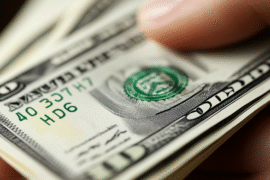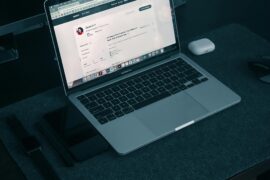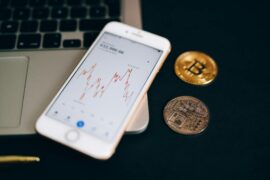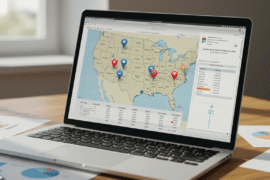This article may contain references to products or services from one or more of our advertisers or partners. We may receive compensation when you click on links to those products or services. Nonetheless, our opinions are our own.
The information presented in this article is accurate to the best of our knowledge at the time of publication. However, information is subject to change, and no guarantees are made about the continued accuracy or completeness of this content after its publication date.
- Introduction
- How Economic Ups and Downs Affect Jobs and Policy
- Cyclical Unemployment in Economic Terms
- The Business Cycle’s Influence on Employment
- Causes of Cyclical Unemployment
- Historical and Current Examples
- Policies to Address Cyclical Unemployment
- Frequently Asked Questions
- Final Thoughts on Cyclical Unemployment
- Recommended Reads
Introduction
Cyclical unemployment plays a critical role in understanding economic fluctuations. It refers to job losses caused by changes in the economy, such as periods of recession or growth. These fluctuations significantly affect the labor market, creating challenges for policymakers aiming to achieve economic stability and full employment. Understanding the concept of cyclical unemployment allows policymakers and individuals to anticipate and respond effectively to economic changes.
How Economic Ups and Downs Affect Jobs and Policy
According to the Congressional Research Service, as of March 2025, cyclical unemployment happens when the economy slows down and people lose jobs because businesses cut back due to lower sales and demand. The Federal Reserve Bank of St. Louis explains that this type of unemployment rises during recessions and falls when the economy grows again. It’s caused by people spending less, which leads companies to produce less and lay off workers. The good news is that this kind of unemployment is usually temporary. The government can help fix it by using tools like tax cuts, stimulus checks, or lower interest rates to boost spending and help businesses hire again.
Cyclical Unemployment in Economic Terms
Cyclical unemployment occurs when the economy experiences a downturn, leading businesses to reduce production and lay off workers. It directly correlates with the business cycle, which alternates between periods of economic expansion and contraction.
When the economy is growing, businesses expand, leading to more jobs and reduced unemployment. Conversely, during a recession, reduced consumer spending forces businesses to cut back, resulting in job losses.
Cyclical unemployment differs from structural and frictional unemployment. Structural unemployment arises from changes in industries or technologies, causing skill mismatches, while frictional unemployment occurs naturally when individuals transition between jobs. Distinguishing between these types helps policymakers address specific unemployment causes effectively.
The Business Cycle’s Influence on Employment
Cyclical unemployment closely mirrors the business cycle. During economic booms, higher consumer demand encourages businesses to hire more workers, lowering unemployment rates. Conversely, during economic downturns, reduced demand forces businesses to cut jobs, raising unemployment levels.
For example, during a recession, consumer spending decreases significantly. Businesses respond by reducing production, investment, and workforce size, creating a feedback loop of falling demand and rising unemployment. Policymakers can mitigate this cycle through timely interventions, such as stimulating demand or reducing taxes.
Voted "Best Overall Budgeting App" by Forbes and WSJ
Monarch Money helps you budget, track spending, set goals, and plan your financial future—all in one app.
Get 50% OFF your first year with code MONARCHVIP
Causes of Cyclical Unemployment
Economic Downturns and Their Consequences
Economic recessions weaken consumer confidence, leading to reduced spending and investment. This decrease in aggregate demand compels businesses to downsize, increasing unemployment. For instance, during the 2008 Great Recession, the collapse of the housing market and financial sector triggered widespread job losses in construction, manufacturing, and retail.
The Demand-Employment Connection
Consumer demand drives employment in most industries. When demand rises, businesses hire more workers to meet production needs. Conversely, declining demand results in reduced revenue and workforce reductions. This direct relationship highlights the need for steady consumer confidence to maintain stable employment levels.
Historical and Current Examples
U.S. Economic History
The Great Depression (1930s) and the Great Recession (2008–2009) are two stark examples of cyclical unemployment. During the Great Recession, the U.S. unemployment rate doubled from 5% to 10% within two years, driven by plummeting housing markets and a global financial crisis. These events underscore the devastating impact of cyclical unemployment on individuals and the economy.
Modern Employment Fluctuations
Cyclical unemployment rates fluctuate with economic conditions. During economic expansions, they typically decline, while recessions see sharp increases. Recent trends also show how global factors, such as pandemics or geopolitical instability, amplify these fluctuations, emphasizing the interconnectedness of modern economies.
Policies to Address Cyclical Unemployment
Public Sector Interventions
Governments use fiscal policies, such as increased public spending and tax cuts, to stimulate demand during economic downturns. For example, investing in infrastructure projects can create jobs and boost economic activity. Monetary policies, like lowering interest rates or quantitative easing, encourage borrowing and spending, further mitigating unemployment.
Private Sector Contributions
The private sector drives job creation through investment and innovation. By fostering a business-friendly environment and supporting workforce training, governments can enable the private sector to expand and create jobs, reducing cyclical unemployment.
Frequently Asked Questions
What strategies can individuals use to minimize the impact of cyclical unemployment?
To reduce the impact of cyclical unemployment, individuals can:
- Enroll in online courses or skill-building programs to remain competitive.
- Explore gig work or freelance opportunities for additional income.
- Save severance. pay strategically for essential expenses.
- Leverage professional networks and job boards to uncover new opportunities.
By proactively adapting to economic changes, individuals can safeguard their careers and financial stability.
How do fiscal policies help combat cyclical unemployment?
Fiscal policies involve government actions such as increasing public spending or reducing taxes. During economic downturns, these measures boost aggregate demand by encouraging consumer spending and business investment. For example, infrastructure projects can create jobs and stimulate economic activity, directly reducing cyclical unemployment.
Can cyclical unemployment be completely eliminated?
Cyclical unemployment cannot be entirely eliminated because it is tied to the natural fluctuations of the economy. However, policymakers can minimize its severity through timely interventions like fiscal stimulus or monetary easing. A proactive approach ensures that unemployment levels return to normal once the economy recovers.
Final Thoughts on Cyclical Unemployment
Cyclical unemployment reflects the economy’s natural fluctuations and profoundly impacts individuals and industries. Understanding its causes and effects enables policymakers to implement effective strategies, such as fiscal and monetary policies, to stabilize the economy. Individuals can also adapt by upskilling and staying flexible in the labor market. Collaborative efforts between governments, businesses, and workers are essential for reducing cyclical unemployment and fostering long-term economic stability.

Reviewed and edited by Albert Fang.
See a typo or want to suggest an edit/revision to the content? Use the contact us form to provide feedback.
At FangWallet, we value editorial integrity and open collaboration in curating quality content for readers to enjoy. Much appreciated for the assist.
Did you like our article and find it insightful? We encourage sharing the article link with family and friends to benefit as well - better yet, sharing on social media. Thank you for the support! 🍉
Article Title: Why Cyclical Unemployment Happens and What Can Be Done About It
https://fangwallet.com/2025/07/20/why-cyclical-unemployment-happens-and-what-can-be-done-about-it/The FangWallet Promise
FangWallet is an editorially independent resource - founded on breaking down challenging financial concepts for anyone to understand since 2014. While we adhere to editorial integrity, note that this post may contain references to products from our partners.
The FangWallet promise is always to have your best interest in mind and be transparent and honest about the financial picture.
Become an Insider

Subscribe to get a free daily budget planner printable to help get your money on track!
Make passive money the right way. No spam.
Editorial Disclaimer: The editorial content on this page is not provided by any of the companies mentioned. The opinions expressed here are the author's alone.
The content of this website is for informational purposes only and does not represent investment advice, or an offer or solicitation to buy or sell any security, investment, or product. Investors are encouraged to do their own due diligence, and, if necessary, consult professional advising before making any investment decisions. Investing involves a high degree of risk, and financial losses may occur including the potential loss of principal.
Source Citation References:
+ Inspo
Congressional Research Service. (2025, March). Introduction to U.S. Economy: Unemployment (IF10443). Congress.gov.












































